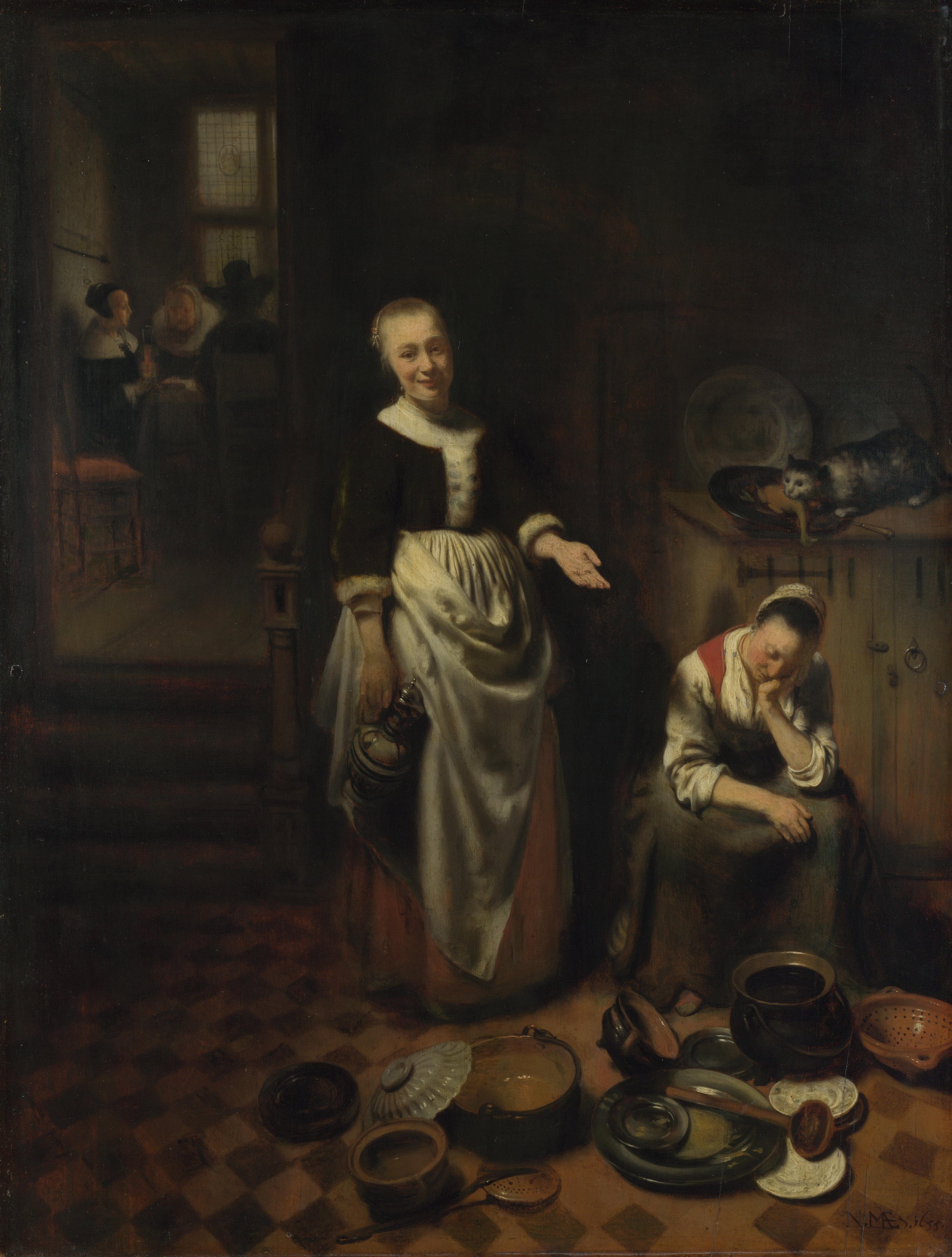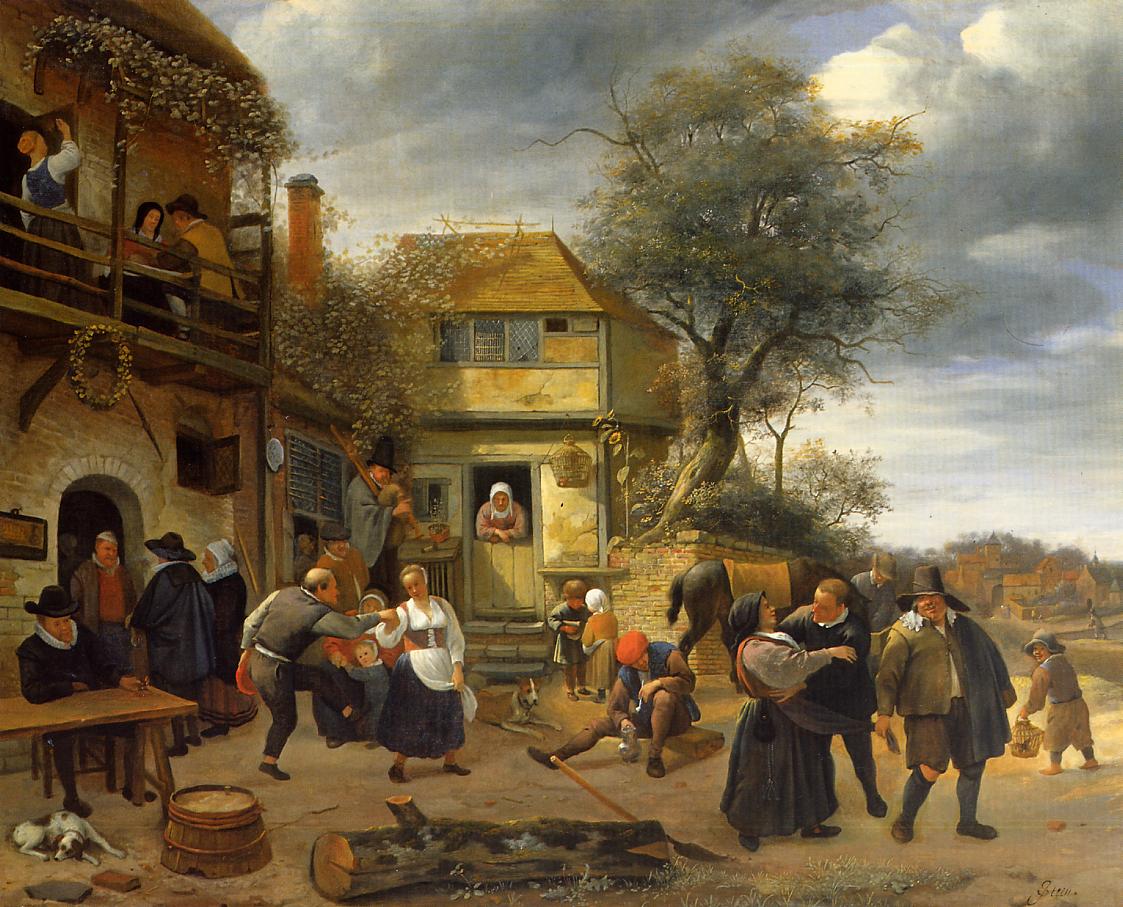|
The Physician's Visit
''The Physician's Visit'' (ca. 1660–1662) is an oil-on-canvas genre painting by the Dutch artist Jan Steen, now seen in the Apsley House collection in London. Its subject is similar to his ''The Lovesick Maiden'' in the Metropolitan Museum of Art from the same era. The painting is a representation of how women were treated when treated by doctors in the 1600s. The painting features several small details and disguised symbolism that may go unnoticed to the common eye, but nevertheless contribute to the painting's meaning. Visual analysis This painting is a visual representation of medical practices that were performed on women in the 1660s. Jan Steen uses very direct facial expressions to show what the people in this painting were feeling. Women in paintings such as this and ''The Lovesick Maiden ''The Lovesick Maiden'' is a c. 1660 oil-on-canvas genre painting by Jan Steen. It shows a young woman suffering from love-sickness surrounded by her doctor and a maid-servant. It ... [...More Info...] [...Related Items...] OR: [Wikipedia] [Google] [Baidu] |
Genre Art
Genre art is the pictorial representation in any of various media of scenes or events from everyday life, such as markets, domestic settings, interiors, parties, inn scenes, work, and street scenes. Such representations (also called genre works, genre scenes, or genre views) may be realistic, imagined, or romanticized by the artist. Some variations of the term ''genre art'' specify the medium or type of visual work, as in ''genre painting'', ''genre prints'', ''genre photographs'', and so on. The following concentrates on painting, but genre motifs were also extremely popular in many forms of the decorative arts, especially from the Rococo of the early 18th century onwards. Single figures or small groups decorated a huge variety of objects such as porcelain, furniture, wallpaper, and textiles. Genre painting ''Genre painting'', also called ''genre scene'' or ''petit genre'', depicts aspects of everyday life by portraying ordinary people engaged in common activities. One comm ... [...More Info...] [...Related Items...] OR: [Wikipedia] [Google] [Baidu] |
Jan Steen
Jan Havickszoon Steen (c. 1626 – buried 3 February 1679) was a Dutch Golden Age painter, one of the leading genre painters of the 17th century. His works are known for their psychological insight, sense of humour and abundance of colour. Life Steen was born in Leiden, a town in Southern Holland, where his well-to-do, Catholic family were brewers who ran the tavern ''The Red Halbert'' for two generations. Steen's father even leased him a brewery of his own in Delft from the years 1654 until 1657. He was the eldest of eight or more children. Like his even more famous contemporary Rembrandt van Rijn, Jan Steen attended the Latin school and became a student in Leiden. Though no official records of Steen's artistic training are preserved, contemporary sources tell us he received his painterly education from three men, Nicolaes Knupfer (1603–1660), a German painter of historical and figurative scenes in Utrecht, Adriaen van Ostade, and Jan van Goyen, who would later become ... [...More Info...] [...Related Items...] OR: [Wikipedia] [Google] [Baidu] |
Apsley House
Apsley House is the London townhouse of the Dukes of Wellington. It stands alone at Hyde Park Corner, on the south-east corner of Hyde Park, facing south towards the busy traffic roundabout in the centre of which stands the Wellington Arch. It is a Grade I listed building. It is sometimes referred to as the Wellington Museum, its official designation under a 1947 Act of Parliament. The house is now run by English Heritage and is open to the public as a museum and art gallery, exhibiting the Wellington Collection, a large collection of paintings, other artworks and memorabilia of the career of the 1st Duke. The 9th Duke of Wellington retains the use of part of the buildings. It is perhaps the only preserved example of an English aristocratic townhouse from its period. The practice has been to maintain the rooms as far as possible in the original style and decor. History Apsley House stands at the site of an old lodge that belonged to the crown. During the Interregnum newer build ... [...More Info...] [...Related Items...] OR: [Wikipedia] [Google] [Baidu] |
The Lovesick Maiden
''The Lovesick Maiden'' is a c. 1660 oil-on-canvas genre painting by Jan Steen. It shows a young woman suffering from love-sickness surrounded by her doctor and a maid-servant. It is in the collection of the Metropolitan Museum of Art. Description Jan Steen's ''The Lovesick Maiden'' depicts an indoor scene in a room belonging to a bourgeois family. The otherwise dark room has soft light illuminating the figures from a source in the front left side of the room, hidden behind the viewer's line of sight. A secondary source of light from the open doors allow additional illumination to flood the scene. The focal point of this piece exists in the middle foreground where the three central figures are located. As the main subject, a young woman is seated on a chair with her left foot resting on a stool. Next to her, there is a man to the left known to be a doctor, holding the maiden's wrist with one hand and a bag with his other. To the right, an older woman stands behind the maiden, wit ... [...More Info...] [...Related Items...] OR: [Wikipedia] [Google] [Baidu] |
Metropolitan Museum Of Art
The Metropolitan Museum of Art of New York City, colloquially "the Met", is the largest art museum in the Americas. Its permanent collection contains over two million works, divided among 17 curatorial departments. The main building at 1000 Fifth Avenue, along the Museum Mile on the eastern edge of Central Park on Manhattan's Upper East Side, is by area one of the world's largest art museums. The first portion of the approximately building was built in 1880. A much smaller second location, The Cloisters at Fort Tryon Park in Upper Manhattan, contains an extensive collection of art, architecture, and artifacts from medieval Europe. The Metropolitan Museum of Art was founded in 1870 with its mission to bring art and art education to the American people. The museum's permanent collection consists of works of art from classical antiquity and ancient Egypt, paintings, and sculptures from nearly all the European masters, and an extensive collection of American and modern ... [...More Info...] [...Related Items...] OR: [Wikipedia] [Google] [Baidu] |
1660s Paintings
Year 166 ( CLXVI) was a common year starting on Tuesday (link will display the full calendar) of the Julian calendar. At the time, it was known as the Year of the Consulship of Pudens and Pollio (or, less frequently, year 919 '' Ab urbe condita''). The denomination 166 for this year has been used since the early medieval period, when the Anno Domini calendar era became the prevalent method in Europe for naming years. Events By place Roman Empire * Dacia is invaded by barbarians. * Conflict erupts on the Danube frontier between Rome and the Germanic tribe of the Marcomanni. * Emperor Marcus Aurelius appoints his sons Commodus and Marcus Annius Verus as co-rulers (Caesar), while he and Lucius Verus travel to Germany. * End of the war with Parthia: The Parthians leave Armenia and eastern Mesopotamia, which both become Roman protectorates. * A plague (possibly small pox) comes from the East and spreads throughout the Roman Empire, lasting for roughly twenty years. * ... [...More Info...] [...Related Items...] OR: [Wikipedia] [Google] [Baidu] |
Paintings By Jan Steen
Painting is the practice of applying paint, pigment, color or other medium to a solid surface (called the "matrix" or "support"). The medium is commonly applied to the base with a brush, but other implements, such as knives, sponges, and airbrushes, can be used. In art, the term ''painting ''describes both the act and the result of the action (the final work is called "a painting"). The support for paintings includes such surfaces as walls, paper, canvas, wood, glass, lacquer, pottery, leaf, copper and concrete, and the painting may incorporate multiple other materials, including sand, clay, paper, plaster, gold leaf, and even whole objects. Painting is an important form in the visual arts, bringing in elements such as drawing, composition, gesture (as in gestural painting), narration (as in narrative art), and abstraction (as in abstract art). Paintings can be naturalistic and representational (as in still life and landscape painting), photographic, abstract, narrative, s ... [...More Info...] [...Related Items...] OR: [Wikipedia] [Google] [Baidu] |
Paintings In The Wellington Collection
Painting is the practice of applying paint, pigment, color or other medium to a solid surface (called the "matrix" or "support"). The medium is commonly applied to the base with a brush, but other implements, such as knives, sponges, and airbrushes, can be used. In art, the term ''painting ''describes both the act and the result of the action (the final work is called "a painting"). The support for paintings includes such surfaces as walls, paper, canvas, wood, glass, lacquer, pottery, leaf, copper and concrete, and the painting may incorporate multiple other materials, including sand, clay, paper, plaster, gold leaf, and even whole objects. Painting is an important form in the visual arts, bringing in elements such as drawing, composition, gesture (as in gestural painting), narration (as in narrative art), and abstraction (as in abstract art). Paintings can be naturalistic and representational (as in still life and landscape painting), photographic, abstract, narrative, ... [...More Info...] [...Related Items...] OR: [Wikipedia] [Google] [Baidu] |
.jpg)





